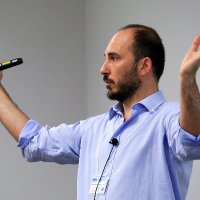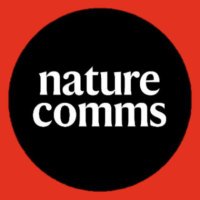
Roberto Di Leonardo
@robdileonardo
Physics Professor @SapienzaRoma
ID: 2394171567
http://www.dileonardolab.it 08-03-2014 15:38:22
17 Tweet
290 Followers
66 Following

A #PhD position in #ActiveMatter #physics is available Sapienza Università di Roma. The position is fully funded by the Marie Skłodowska-Curie ActiveMatter ITN. We are looking for an #EarlyStageResearcher to work on #bacteria driven #microrobots. euraxess.ec.europa.eu/jobs/537680 Closing: 30 July 2020

Our new Nature Communications article shows that strong enough confinement can make #bacteria swim faster by stabilizing trajectories that run along the axis of narrow channels. nature.com/articles/s4146… youtu.be/gfRDCg5Otfo #microswimmers

University Sapienza Università di Roma invites applications for faculty positions at the Associate and Full Professor level in all fields of Physics. More on eligibility and applications at phys.uniroma1.it/fisica/node/98… Closing: 31 Jan 2021




University Sapienza Università di Roma invites applications for faculty positions at the Associate and Full Professor level in all fields of Physics. More on eligibility and applications at: phys.uniroma1.it/fisica/node/98… Closing: 31 Jan 2022




We herd #bacteria into regions of high density and motility using computer-controlled 'sheepdogs' of light. Out in Nature Communications with Helena Massana-Cid, C.Maggi and Giacomo Frangipane. #microswimmers #activematter nature.com/articles/s4146… youtu.be/qlWx9E0qRIU

When capillary forces restrict the body motions of E. coli #bacteria trapped in a water-air interface, the angle of inclination and flexibility of the flagellar bundle select one of four main swimming modes. Published in Physical Review Research #microswimmers journals.aps.org/prresearch/abs…

📅!!!REGISTER NOW!!!📅 PHYMOT International Workshop on the 𝐏𝐡𝐲𝐬𝐢𝐜𝐬 𝐨𝐟 𝐌𝐢𝐜𝐫𝐨𝐛𝐢𝐚𝐥 𝐌𝐨𝐭𝐢𝐥𝐢𝐭𝐲🦠 Register before August 12 🐦(late registration: Sept 9) November 2-4, 2022, ESPCI Paris - PSL, France 🇫🇷🇪🇺 etn-phymot.eu/phymot-worksho… #PHYMOT #GG #biophysics


If a colloidal sphere is placed at the interface between fast and slow #bacteria, individual cells will push more on the fast side, but there will be more in the slow region. So in which direction will it move? The answer in our new Nature Communications article: nature.com/articles/s4146…


